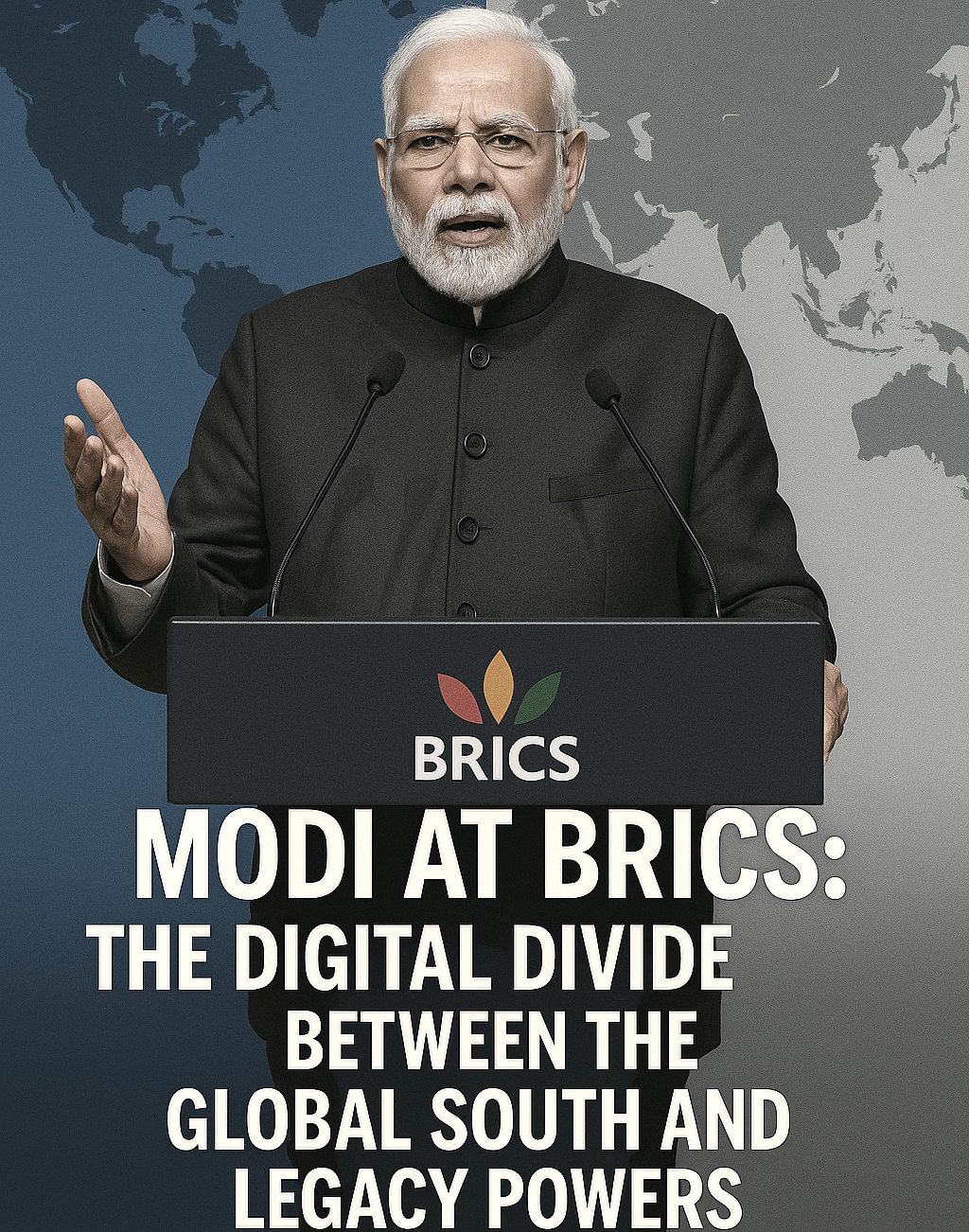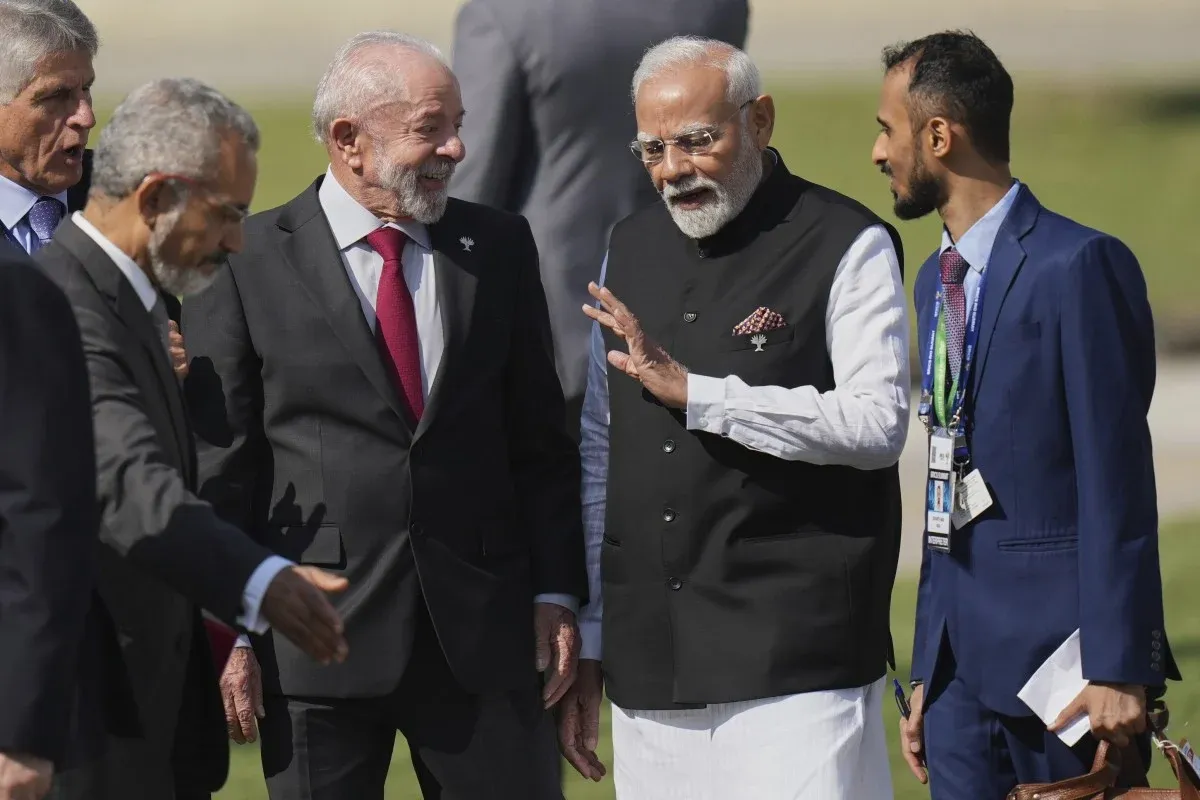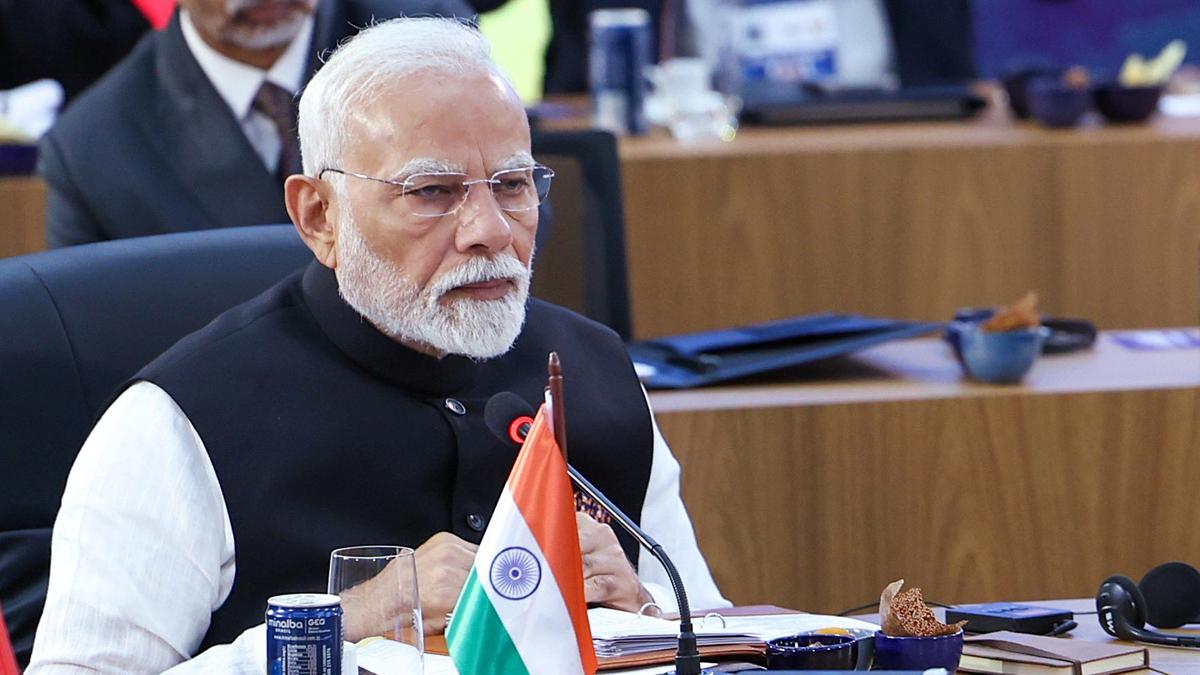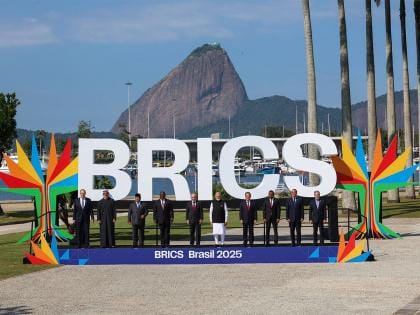India’s Dominant Voice at BRICS 2025: From Digital Economy to Global South Leadership
Discover how India positioned itself as a tech-driven leader at BRICS 2025 in Rio, championing the Global South through digital public infrastructure, AI, fintech, and climate resilience.

RIO DE JANEIRO, July 7, 2025
At the 17th BRICS Summit in Rio de Janeiro, India didn't just attend. It led the discussion, influenced outcomes, and established itself as a clear voice for the Global South. Prime Minister Narendra Modi's strong statements, supported by real policy initiatives—from Digital Public Infrastructure to investments in clean technology—redefined India’s role from a junior partner to a key player in the emerging multipolar world.
The Road to Rio
BRICS, which stands for Brazil, Russia, India, China, and South Africa, has often struggled with its identity. Was it an anti-Western group? A trade organization? A development project? At BRICS 2025, clarity emerged. With the Global South's economic power growing, India used the summit to kickstart a new geopolitical approach focused on technology equity, climate justice, and reform-oriented diplomacy.
This shift didn’t happen overnight. India has invested in the groundwork for this moment:
- Over 4.5 billion transactions daily on UPI (Unified Payments Interface)
- Aadhaar, India’s biometric identity system, enrolls over 98% of the population
- Promoting global Digital Public Infrastructure through G20 leadership and partnerships with other countries

A New Pillar for BRICS: Digital Public Infrastructure
One of the most significant outcomes of the summit was the creation of the BRICS Digital Public Infrastructure (DPI) Development Fund, which started with $1 billion; India contributed $400 million.
India presented its DPI stack (Aadhaar, UPI, DigiLocker) as modular, open-source, and capable of being shared. Countries like Ethiopia, Argentina, and Nigeria, which recently joined BRICS, signed agreements to create similar DPI systems.
Key elements of the DPI agreement include:
- Cross-border payment platforms modeled after UPI
- Digital ID systems that guarantee data privacy
- Open Application Programming Interfaces (APIs) for civic and financial applications
- Technical training centers in Bengaluru and Johannesburg
“We are not exporting technology alone; we are exporting trust, transparency, and empowerment.” – PM Modi
This is expected to reduce financial exclusion by 27% and boost tax revenue through better digital traceability.
India as AI Evangelist: Regulation, Not Hype
At the AI Governance Forum, India introduced the “BRICS Charter on Ethical AI,” a proposal that:
- Bans AI applications for mass surveillance without due process
- Encourages the use of AI for the public good (healthcare, disaster prediction, agri-tech)
- Calls for clear algorithms, audit trails, and inclusive design
- Proposes a South-South AI sandbox for collaborative experiments
India announced its AI4D (Artificial Intelligence for Development) Labs, offering free computing resources and access to datasets for member countries.
The charter was supported by Brazil, South Africa and received cautious approval from Russia. China showed interest, though it had concerns about sovereignty and proprietary technology.
This suggests the start of an “AI Non-Aligned Movement,” where Global South nations emphasize collective ethics over fast-paced development typical of Silicon Valley.

India & the Global South: “We Are Not Passive Participants”
In a powerful speech, PM Modi stated:
“The Global South is not asking for charity. We are demanding a fair share of the future.”
This statement quickly became popular worldwide, shared by influencers, journalists, and diplomats.
Modi called for a major reform of global governance institutions:
Permanent membership in the UN Security Council for India and Brazil
Adjusting IMF voting shares to better reflect the needs of emerging markets
Using a “Human Dignity Index” instead of GDP as a measure of development
Global Response:
Brazil's Lula called it “a declaration of emancipation.”
South Africa's Ramaphosa said BRICS was “no longer a bloc—it is a bridge.”
The African Union expressed support and requested observer status at next year’s BRICS Tech Forum in New Delhi.
Real-World Outcomes: Jobs, Inflation, Tech Access
Unlike previous BRICS conferences, this year's summit produced concrete results:
Jobs
The expansion of UPI and DPI is expected to create 3.2 million jobs in technology, logistics, and data management.
Digital upskilling programs aim to train 1 million coders and DPI engineers by 2030 across Africa and Latin America.
Inflation
New local currency trading mechanisms (like rupee-real and yuan-rand corridors) will help reduce reliance on unstable dollar-based settlements.
India and Brazil launched “Trade Without Tolls,” an initiative to simplify remittances and transactions.
Tech Access
The launch of the BRICS Digital Health Grid will enable telemedicine across borders using Aadhaar-backed authentication.
Cross-border educational exchange platforms will verify credentials through DigiLocker.
Clean-Tech & Climate Resilience: India’s Green Diplomacy
India unveiled the Green BRICS Pact, focusing on:
- Aiming for net-zero emissions by 2070 (India's national target), applicable to member countries
- Creating Green Industrial Parks (GIPs) in Nagpur, Porto Alegre, and Durban
- Jointly running the BRICS Climate Resilience Taskforce from New Delhi and Pretoria
India proposed a BRICS Climate Credit Registry, using blockchain technology to issue transparent, verifiable carbon credits.
“Climate resilience is not a luxury. For us, it is survival.” – PM Modi
The pact aligns with India’s Lifestyle for Environment (LiFE) mission and aims to secure $2 billion in green bonds from the New Development Bank (NDB).
Cybersecurity, Data Trust, and Digital Sovereignty
India raised the importance of digital trust as a security issue. During private discussions, India:
- Advocated for data residency frameworks to ensure user control across borders
- Suggested creating a BRICS CERT+ (Computer Emergency Response Team) to address cyberattacks together
- Expressed concerns about the potential weaponization of quantum computing and called for protocols to manage it
China and Russia reportedly had tense discussions over technology “firewalls,” but India found a compromise—“sovereign compatibility”—allowing national control while maintaining regional cooperation.

Diplomacy with China: Cold but Calculated
India and China maintained a measured relationship during the summit, avoiding confrontation. Although Modi and Xi did not hold a formal meeting, their teams reached agreements on:
- A joint task force for digital standards
- Discussions on border management technology (GIS fencing, satellite surveillance)
- A halt to hostile digital propaganda between the two countries
Experts described this as a “cold peace framework,” similar to the détente era.
“India didn't bend. It balanced.” – C. Raja Mohan, Indian foreign policy scholar
Summit Takeaways: By the Numbers
| Focus Area | Outcome |
|---|---|
| Digital Public Infrastructure | $1B DPI Fund; UPI expansion to 5 countries |
| AI & Ethics | BRICS AI Charter adopted (non-binding, review in 2026) |
| Green BRICS Pact | 3 green industrial parks; $2B bond financing |
| Governance Reforms | Resolution for UNSC expansion; IMF quota renegotiation proposed |
| Climate Resilience | Climate Credit Blockchain & Resilience Taskforce |
| India-China Talks | Informal agreement on tech trust & standards |
| Job Creation & Tech Access | 3.2M projected jobs; 1M upskilled tech workers by 2030 |

What Happens Next?
India will host the Global South Tech Forum 2026 in New Delhi. Key areas of focus include:
- DPI rollouts and evaluations of citizen impact
- Best practices for AI regulation and real-world pilots
- Interoperable green technology licenses
- Establishing a BRICS Futures Council
Additionally, India will take over as Chair of the New Development Bank, giving it the chance to guide financing in line with its diplomatic goals.
Final Reflection: Is BRICS Finally a Force?
With its performance in 2025, India did more than catch up to Western-led blocs like the G7 or Quad. It reshaped global cooperation through inclusion, innovation, and intention.
India’s narrative of “trust, tech, and transformation” has moved beyond rhetoric. It has become a policy backed by funding, diplomacy, and global goodwill.
"If 2005 was about India’s economic emergence, 2025 is about India’s leadership maturity."
The Turning Point or Tipping Point?
Can India maintain its role as a leader for the Global South without alienating China and the West? Will strategic overreach provoke a backlash?
Sources
- Ministry of External Affairs, Government of India – Official press releases and speeches by PM Modi at BRICS 2025 (mea.gov.in).
- The Economic Times & Indian Express – Coverage of BRICS 2025 outcomes, India’s Digital Public Infrastructure proposals, and AI ethics declarations. (economictimes.com) (indianexpress.com)
- Reuters & Associated Press (AP) – Images and quotes from on-ground coverage of the BRICS 2025 summit in Rio, AP Photo credits for official group photos and plenary sessions.
- MyGov India (X/Twitter) – Quotes, infographics, and official snippets shared by India’s government communication portal (@mygovindia).
- Organiser & AJC News – Photos of bilateral meetings, cultural engagements, and informal diplomacy outside the main venue. (organiser.org) (ajc.com)
- New Development Bank (NDB) Statements – Insights into funding for Green BRICS Pact, AI labs, and DPI rollouts. (ndb.int)
- NDTV & The Hindu – Credible image sources for Modi’s speech at the summit, cultural engagements, and leaders’ interactions. (ndtv.com) (thehindu.com)
- YouTube & News Video Snapshots – Visuals sourced from official video streams and summit broadcast segments. (YouTube – BRICS Summit 2025 live coverage)




